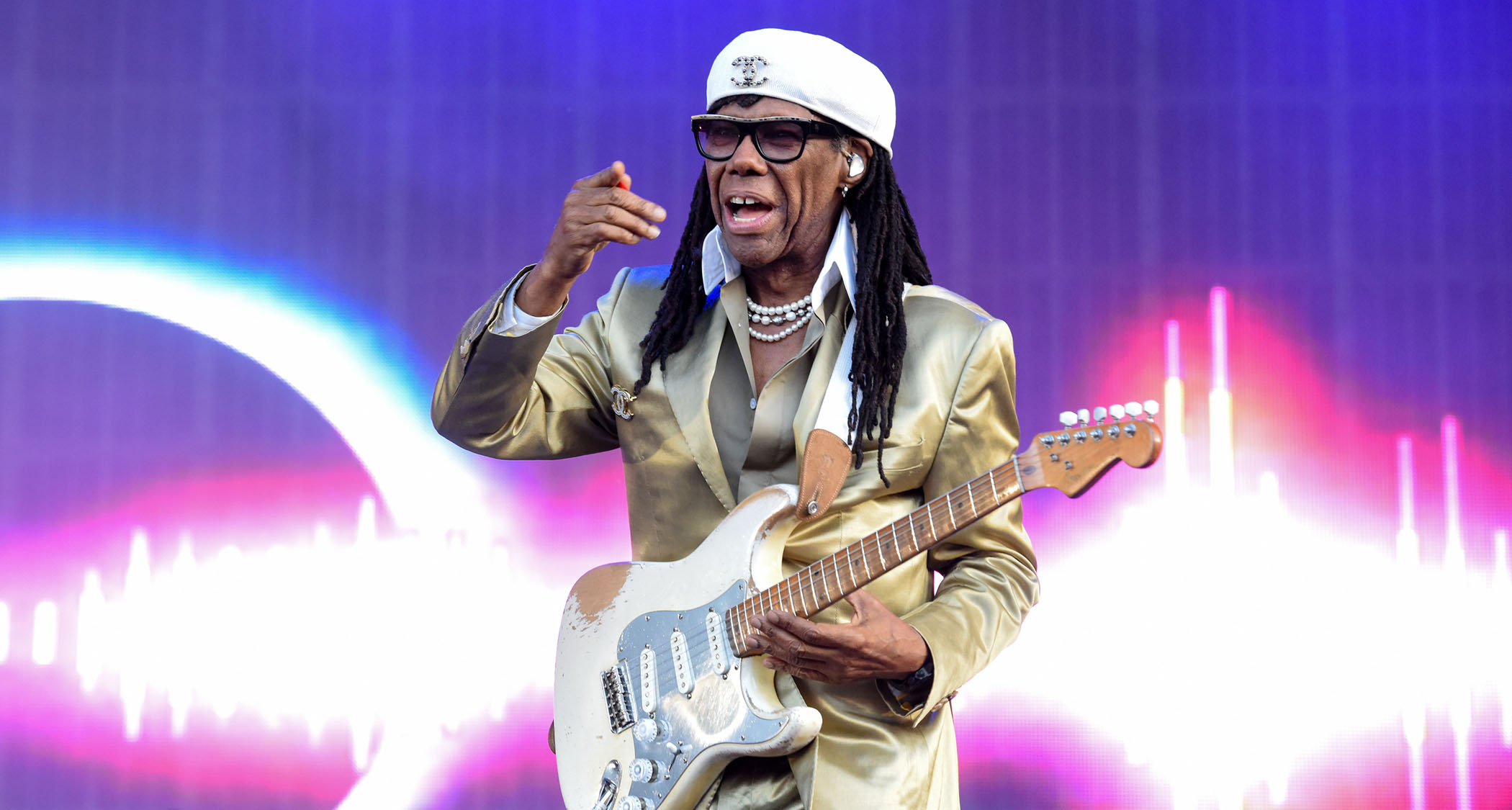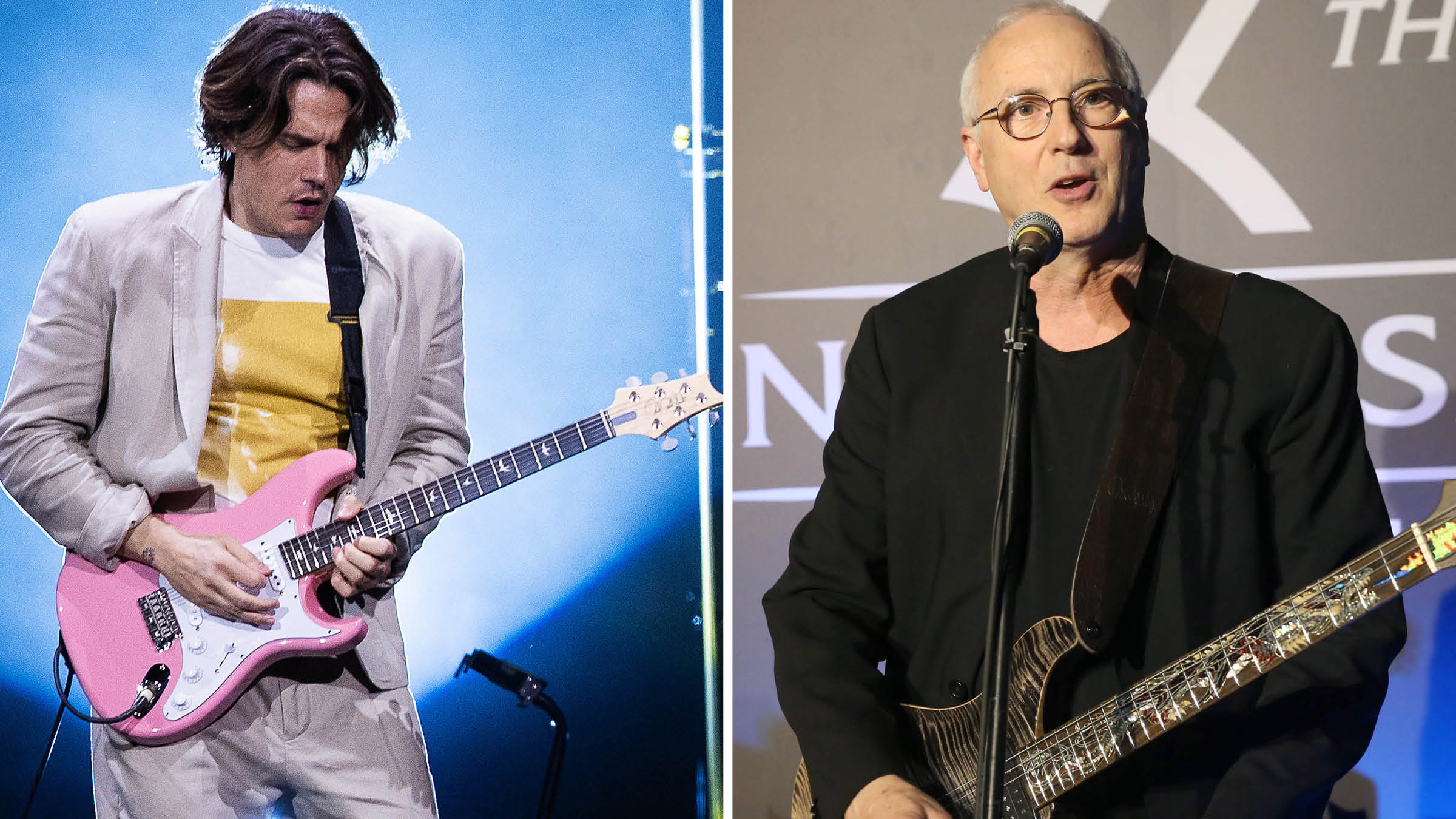“When this kid plugged into my amp and played this Strat, he was playing louder, better and cooler than me. I was like, ‘Whoa’”: Nile Rodgers on what convinced him to buy a Fender Stratocaster – and why it was the best investment he ever made
The Chic founder on the tale of his legendary Hitmaker Strat – which was the cheapest guitar in the store when he bought it

It wouldn’t be a celebration of the Fender Stratocaster’s 70th anniversary without speaking to one of its most iconic proponents about the Strat that has shifted so many units it is forever to be known as the Hitmaker
Here, Nile Rodgers of Chic explains what makes the Strat so special – and how he got turned onto it in the first place.
What first attracted you to the Strat?
“Somebody else playing through my amplifier and sounding better than me! [Laughs]”
What guitar were you using before the Stratocaster?
“That particular night when that incident happened, I was playing a [Gibson] Barney Kessel, it’s a wonderful jazz guitar, but it was feeding back at relative medium live volumes. You gotta remember this was 1973, and we were playing in a club, and we didn’t have a proper PA.
“All the music that would spill from the stage was the volume the audience would hear. And my jazz guitar would feed back, and when this kid plugged into my amp and played this Strat, his guitar did not feed back – and he was playing louder, better and cooler than me. I was like, ‘Whoa.’”
All the latest guitar news, interviews, lessons, reviews, deals and more, direct to your inbox!
So you bought your Hitmaker Strat in 1973 in Miami, and it’s been your one and only, right?
“I never changed. I bought that guitar in 1973, and I’ve never changed since I had it. I still carry it on my shoulder to this day. And I’m 71-and-a-half years old.”
What was it about that Strat that attracted you?
“Where I’m speaking to you right now is from my studio here in Miami, just a few blocks from where I bought the guitar. I wasn’t particularly attracted to it for any reason other than the fact that it was the cheapest guitar in the store. I’m being perfectly honest. And when I traded in my jazz guitar, the guy gave me back $300. I got the Hitmaker and $300. That was the best deal I probably have ever made in my life.”
Talk about a return on investment.
“Man, you have no idea! [Laughs] It was like buying Bitcoin at 15 cents on the dollar.”
Once you had the Hitmaker, did it take you long to realize you had a special guitar?
“Shortly thereafter, one reason was that our shows got better right away. We [Chic] were opening for the Jackson 5; we only did a couple of shows for them standing in for the O’Jays, but those shows got better right away because, all of a sudden, I was able to play with a hell of a lot more confidence.
“Once I got the Strat, my partner Bernard Edwards basically took me into the woodshed and just started teaching me how to chuck. He said, ‘Man, with your harmonic knowledge, if you get this down…’ And I just was in there for hours and hours and hours every day, and when we got back on the Jackson 5 tour, we were killing it.”
Is it safe to assume the Hitmaker all but shaped what would become your signature style?
“Yeah, but the thing that’s really interesting, though, is that because I had already learned to play guitar on acoustics, mainly classical and jazz, my muscle memory was my arms being extended out over the guitar a bit because of the depth of an acoustic and the jazz box. So I had to re-adapt, not realizing that, in that re-adaptation, I was coming up with something that wound up making my chucking cooler.
“So by trying to make my arm not go out as far, I kept it pressed against the body of the Strat, thereby having the ability to lay my right hand across the bridge, which gave me further muting power. I could mute with my left hand and my right hand, and I developed a technique where I could play very complicated jazz voicings and classical voicing, which you could easily do by fingerpicking.”
How did the Hitmaker – being a hardtail and a little bit slimmer – impact things?
“My Strat is a unique instrument – it’s really one of a kind. It’s not only a hardtail but the thinnest hardtail I’ve ever seen. God knows I’ve tried to buy hundreds to see if I could get another one. God forbid this one broke; what was I gonna do? Because that sound uniquely is my sound.”
I meet guys who are super-aficionados, like Richie Sambora, and he says, ‘Nile, that’s not just a regular Strat; that’s a Mary Kaye, and it’s a hardtail
Hardtail Strats were rare back then, too.
“I only realized it was that special once I played it and then tried to play other Strats, and I was like, ‘Wait a minute… What is this?’ And then someone said to me – and it’s really hard because people tell you stuff, and you take it as the gospel – but they said to me, ‘Hardtail Strats are hard to find because out of every 100 Strats they make with whammy bars, they only made one hardtail.’
“To me, that was the gospel. So I went around looking for other hardtails, but none of them were as thin as mine. Then I meet guys who are super-aficionados, like Richie Sambora, and he says, ‘Nile, that’s not just a regular Strat; that’s a Mary Kaye, and it’s a hardtail.’ And I’m like, ‘How could you… say that? They would have had to have made 100 Mary Kayes and then do one hardtail.’
“He said, ‘I’m telling you, there are Strats that are that thin.’ So I don’t know what the hell it is, and I’m tired of all the folklore. All I know is mine is awesome, and it’s the only one. [Laughs]”
Did you modify the Hitmaker right away?
“I modified it the day I got home because I used to be a guitar repairman. I don’t remember what color the Strat that I bought was, and it’s amazing that I can’t remember. But I was probably so zealous about changing it because I played a jazz guitar. I love jazz guitars with a sunburst finish, but I hated solidbody guitars with sunburst finishes.
“So I made it white like Hendrix, so the finish that’s on my guitar, even though it’s deteriorated somewhat since 1973, I did it myself. I used to work at a shop on 48th Street [New York City], and my guitar repair impresario was a guy named Giuliano Balestra. Giuliano and I painted it; we only put one coat on the guitar because I wanted to paint it antique yellow like Jimi’s as quickly as possible. And that’s it; I’ve never tried to fix it up and make it look any better.
“I actually wanted it to appear to be the age it was because I bought it in ’73, but it’s a ’59/’60 Strat, so it already had ‘age’ when I bought it. I wanted it to weather quite quickly, or at least have a weathered look, because that was the vibe back in those days.”
And then there’s the unique speed knobs and pickguard.
“I put on speed knobs because, in those days, there were a lot of songs where the guitar had to cry. I didn’t have enough money to buy a volume pedal, so we would do it with our fingers. I would just put my pinky down and fool with the tone or the volume control, whichever one sounded the closest to whatever song I was playing.
“And I put on the reflective… it’s almost comical, but I put the reflective plate on it. What was cool is that when I put that plate on it, playing for an audience – especially in small nightclubs – you would be lucky if they had a little spotlight on you. But if they did, you could move the guitar and shine it in a cute girl’s face. [Laughs] It was my silly little show business way of trying to meet girls. And it worked. It was actually pretty effective.”
What does the Hitmaker mean to you?
“Everything. It’s my life, my competition tool and my performance tool. I’m doing a film score today for a John Malkovich film, and even though I have a keyboard next to me, in the old days, I used to do all my scoring on a keyboard, but now, I can hear it on guitar. I can play my full arrangements on guitar, and I could write out the score with just my Strat.
“It’s just a great tool to have something that is friendly; I mean, really, my Strat feels like my best friend when it comes to music. And I’m confident I could perform any kind of job, even if I’m working with someone that they ultimately don’t like what I did. That’s okay; I go into any musical situation fearlessly.”
Andrew Daly is an iced-coffee-addicted, oddball Telecaster-playing, alfredo pasta-loving journalist from Long Island, NY, who, in addition to being a contributing writer for Guitar World, scribes for Bass Player, Guitar Player, Guitarist, and MusicRadar. Andrew has interviewed favorites like Ace Frehley, Johnny Marr, Vito Bratta, Bruce Kulick, Joe Perry, Brad Whitford, Tom Morello, Rich Robinson, and Paul Stanley, while his all-time favorite (rhythm player), Keith Richards, continues to elude him.





